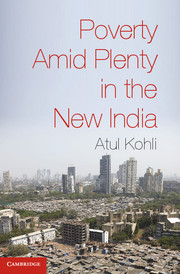3 - Regional Diversity
To Him Who Hath
Published online by Cambridge University Press: 05 June 2012
Summary
The focus of the discussion so far has been mainly at the national level. In Chapter 1, I analyzed political changes since about 1980, emphasizing the tight nature of the state-business alliance that now governs India and the problems that this ruling alliance creates, especially the recurring problem of how to gain the support of the excluded masses in the democratic process. The focus in Chapter 2 was on the impact of the state-business alliance on patterns of economic growth and distribution; I suggested that policies pursued by India's pro-business rulers since the 1980s have generated both rapid economic growth and growing economic inequality, the latter especially during the post-1991 period, leading to only modest gains for those at the bottom of Indian society. While the issue of regional diversity has been touched upon all along, a national-level discussion masks enormous political and economic variation across Indian states. In what follows I introduce the reader to some of this variation, though only in a highly abbreviated fashion, focusing on the political and social determinants of economic outcomes.
India's federal system provides a fair amount of political and policy autonomy to its constituent states. For example, agriculture, land rights, law and order, education, and health are some of the important policy areas that are mainly under the control of state governments. Since the shift in the industrial policy regime in the early 1990s, state governments are also in a position to actively promote new industries in their respective states. Recall that the largest of India's states – say, Uttar Pradesh (U.P.) at nearly 200 million people, or Maharashtra and Bihar at nearly 100 million each – could easily be among the largest countries in the world. The populations of these and other Indian states are organized in complex and diverse social structures that are products of varied historical pasts. Since many of their people speak different languages, regional identities are often strong. Of course, none of this is to minimize the fact that India is a relatively centralized political system in which the national government not only controls taxation and finance, defense, and foreign policy, but also sets the overall framework of politics and of economic policies. The center and the states often jockey for influence. Any understanding of India's political economy would thus be incomplete without some understanding of its regional diversity.
- Type
- Chapter
- Information
- Poverty amid Plenty in the New India , pp. 144 - 211Publisher: Cambridge University PressPrint publication year: 2012



